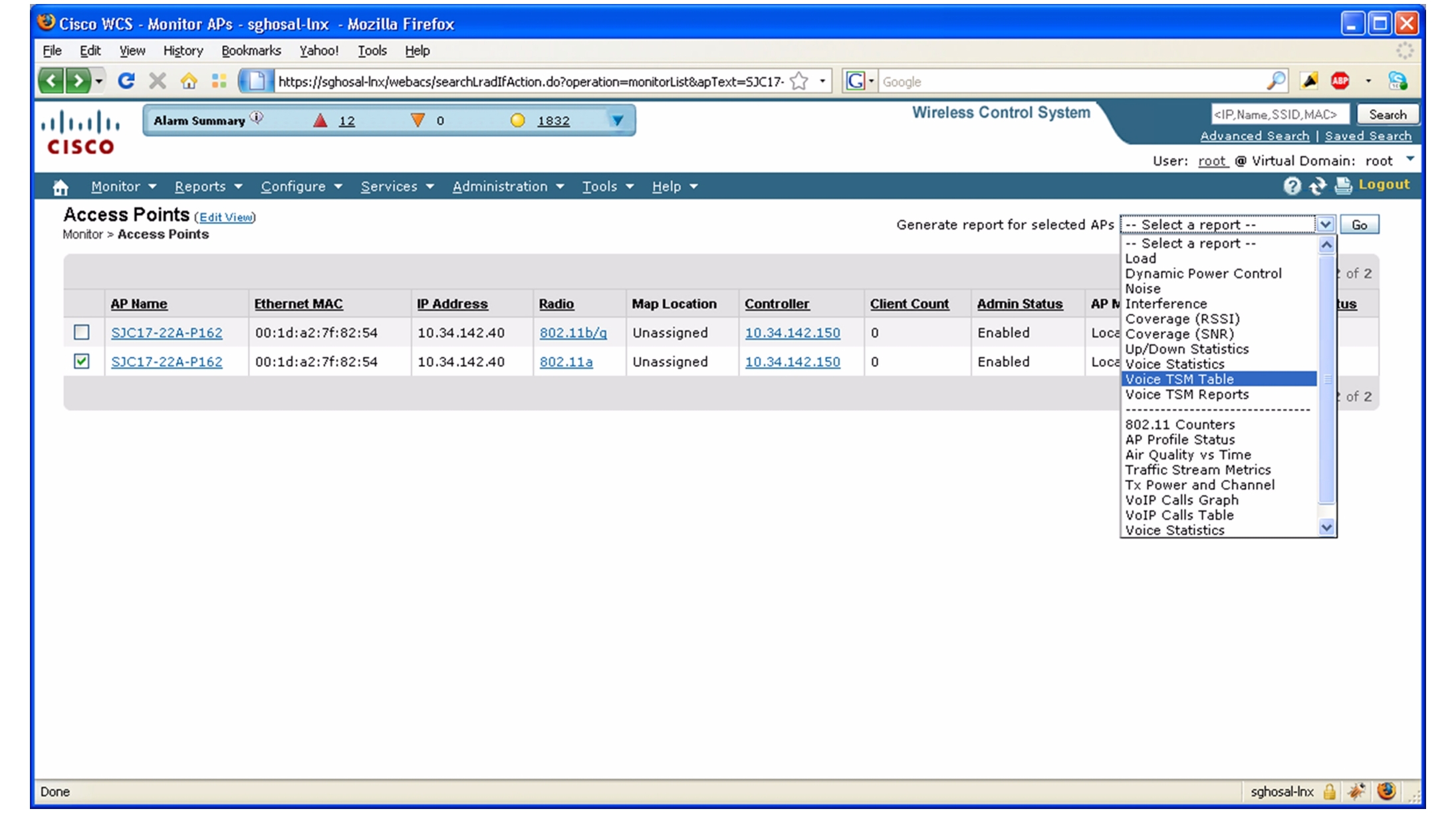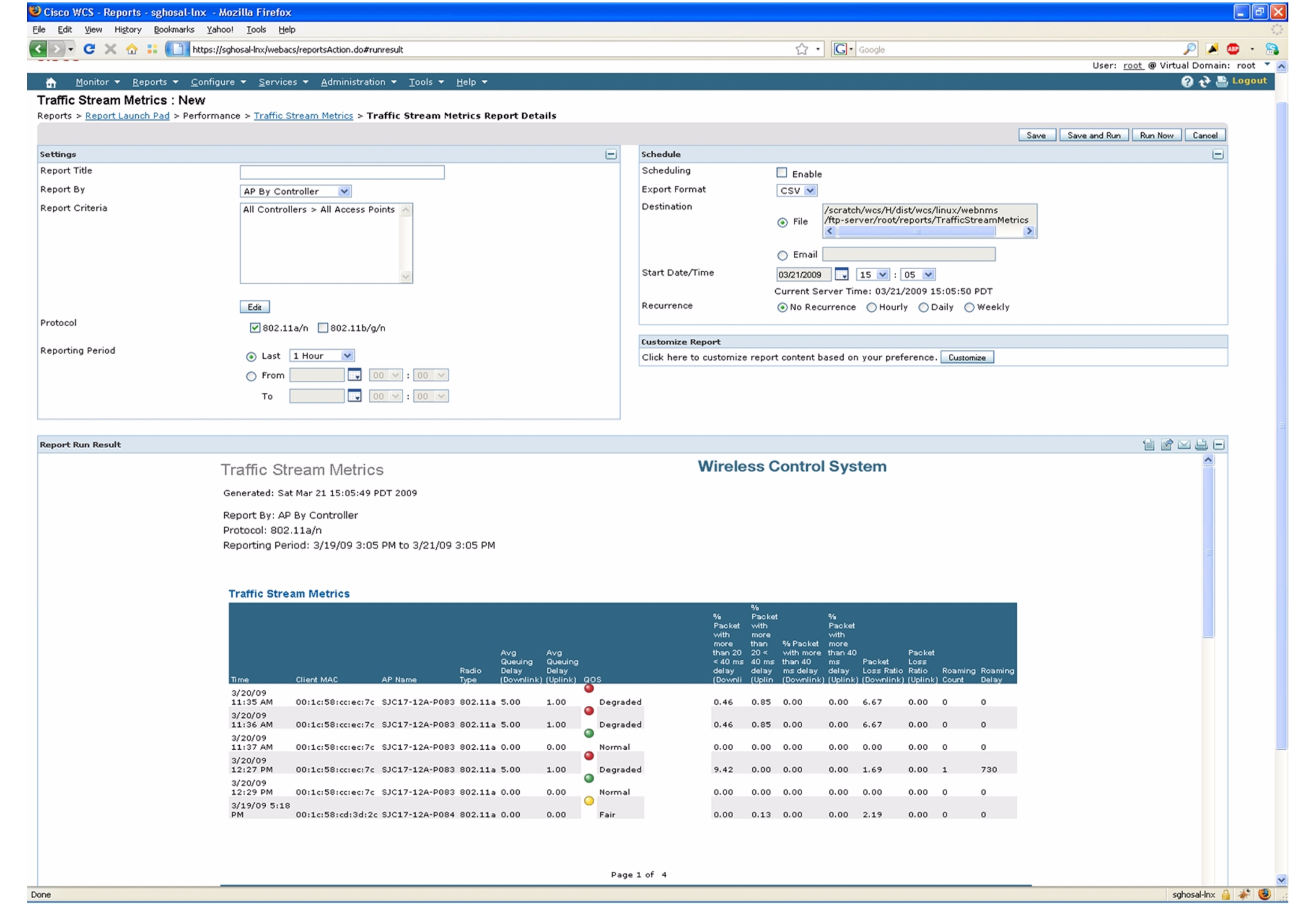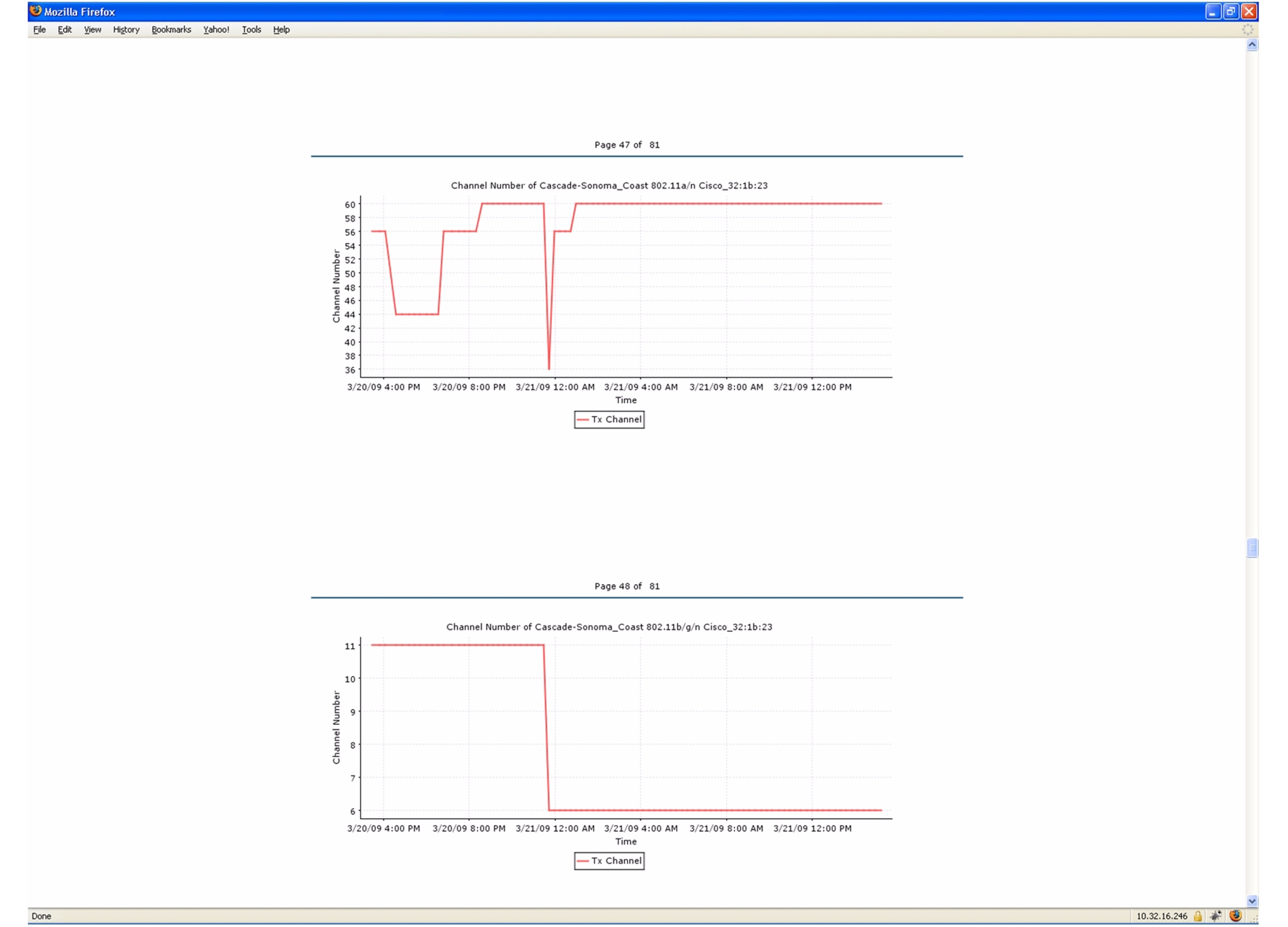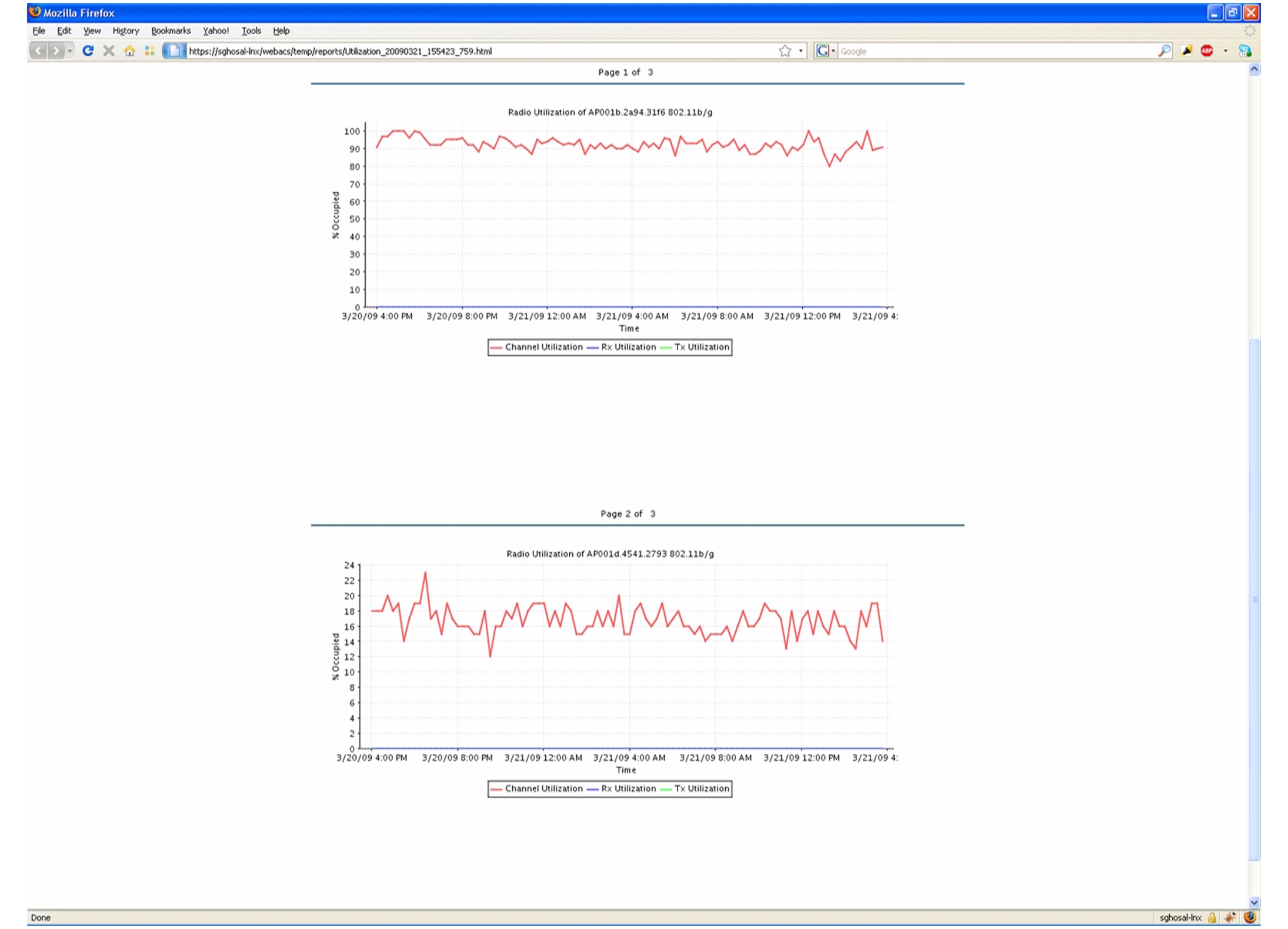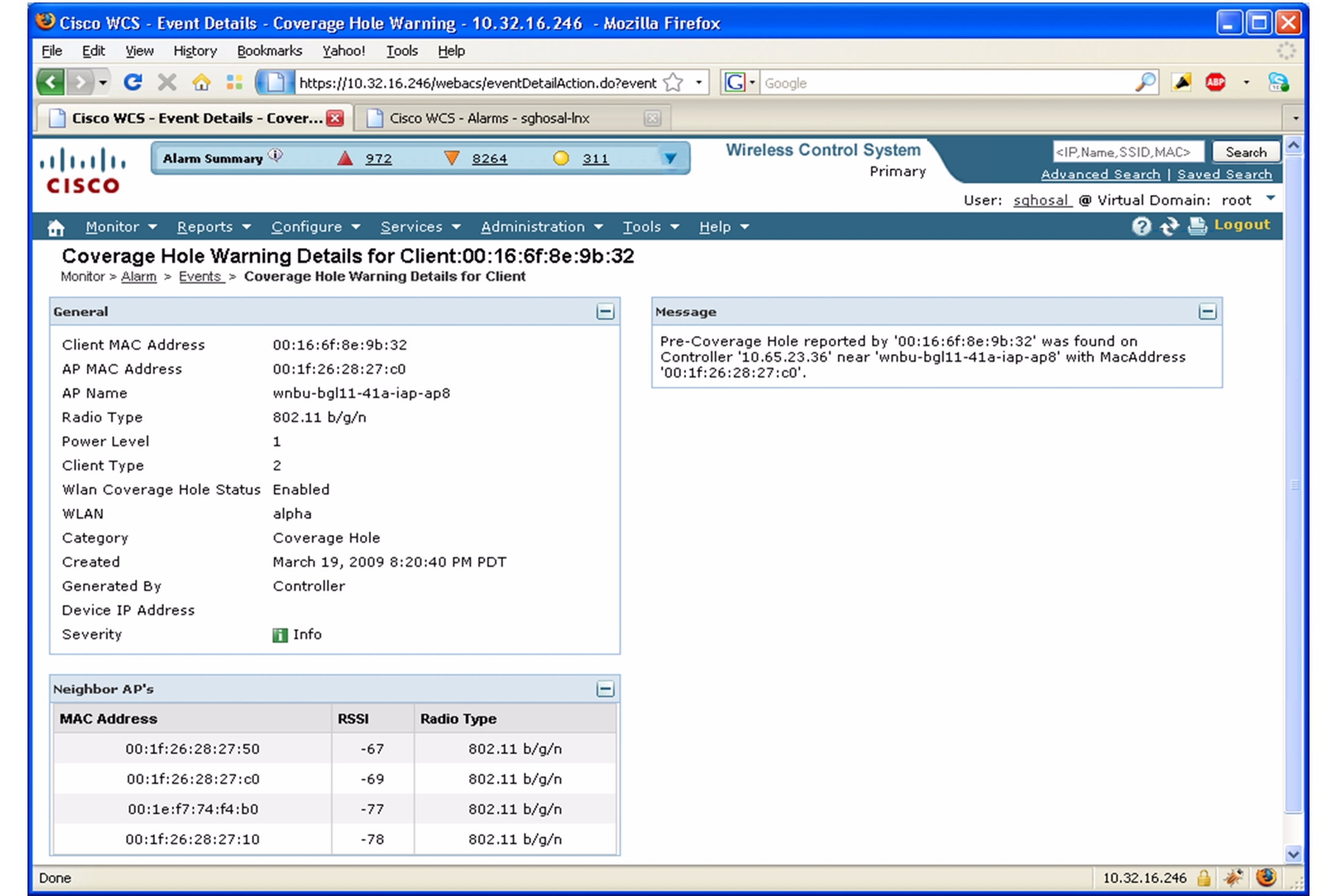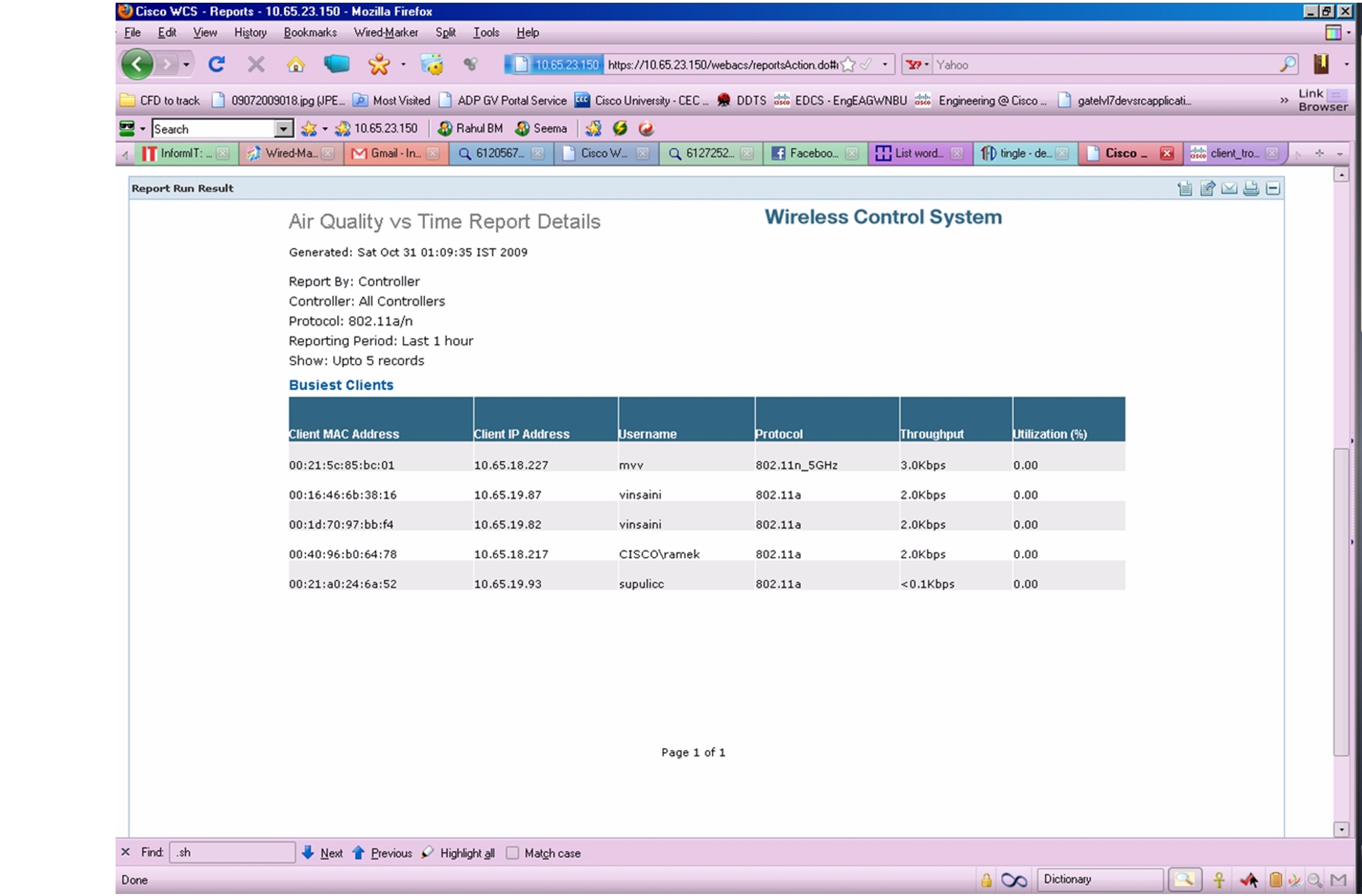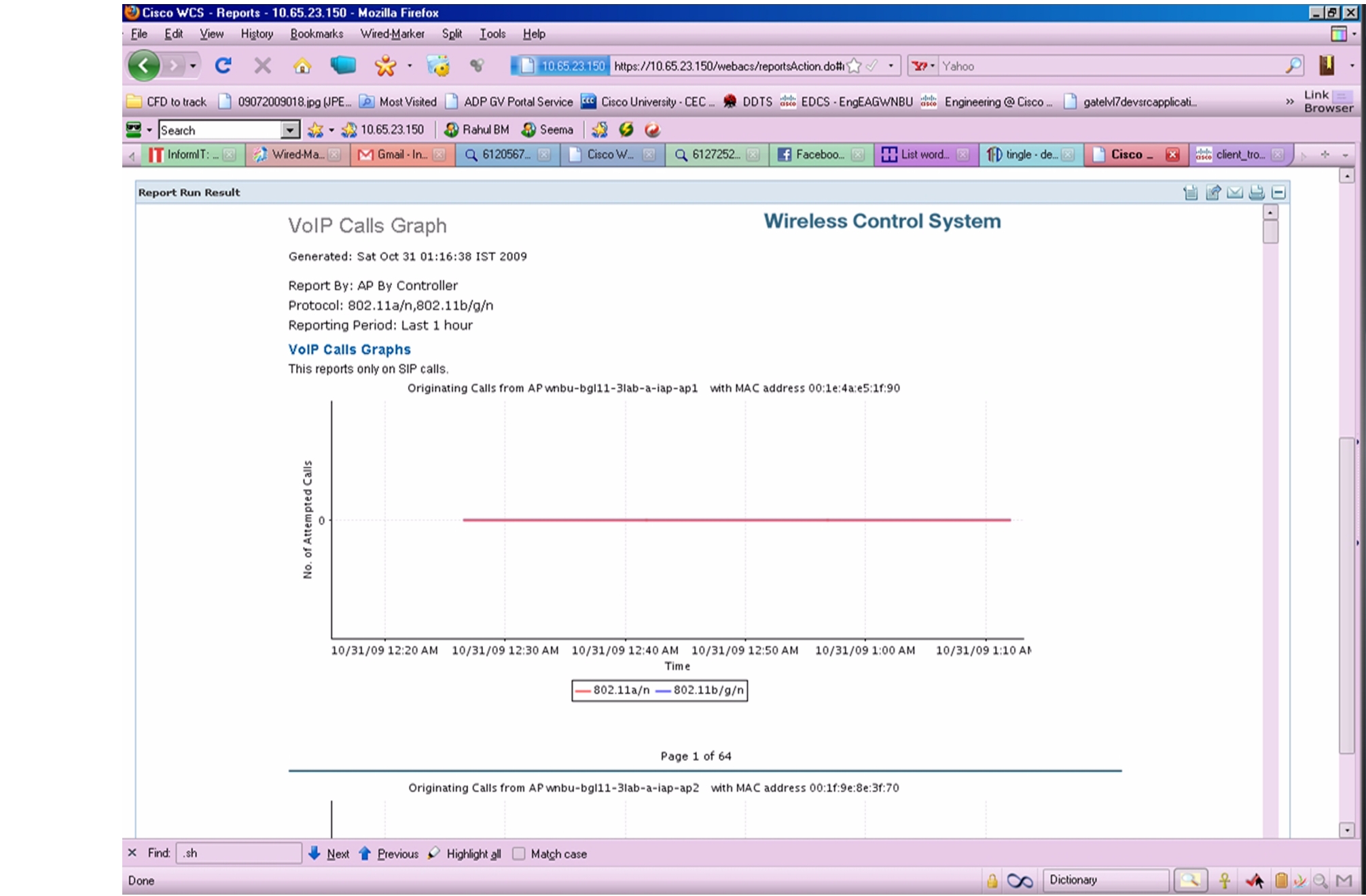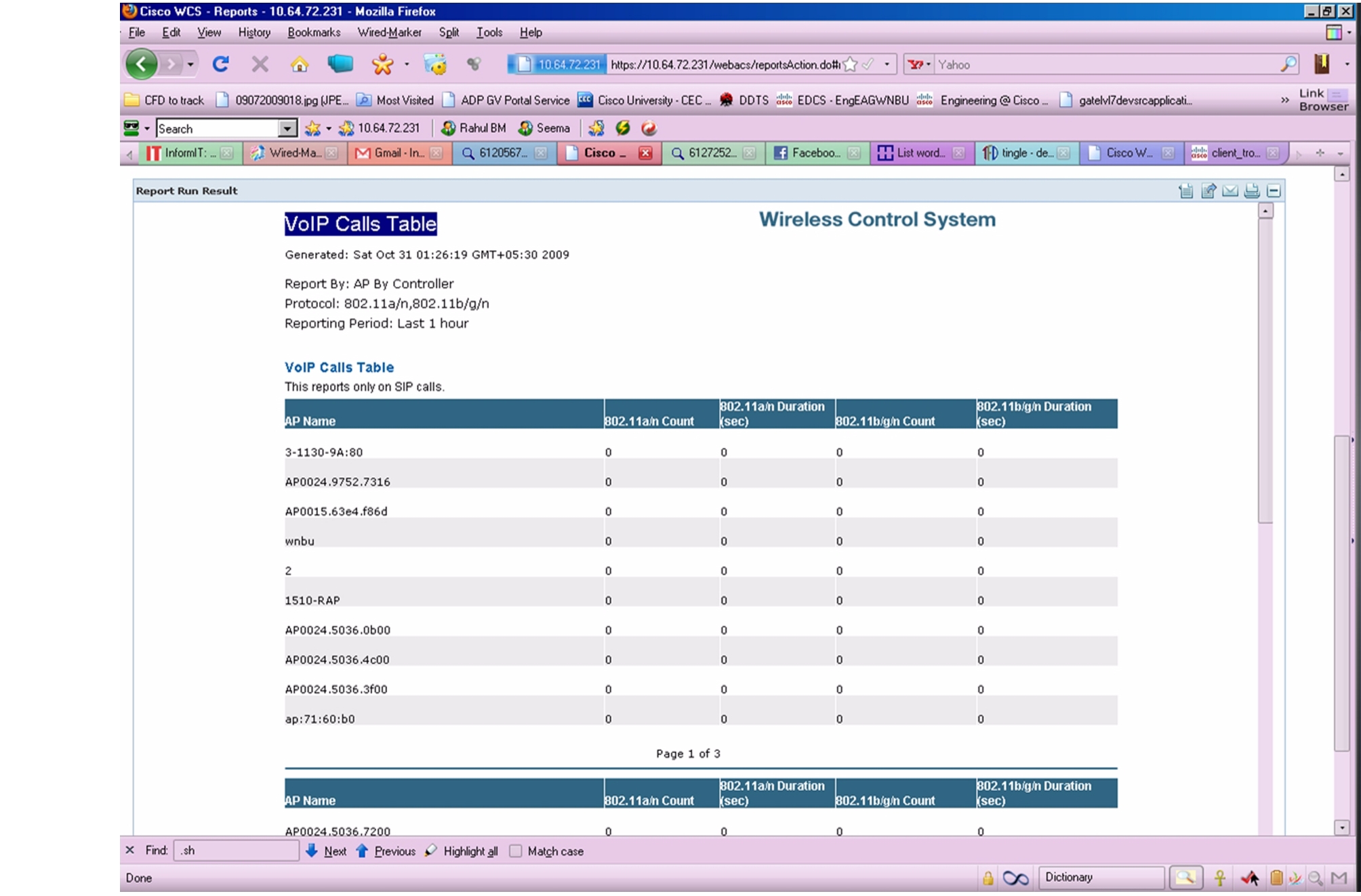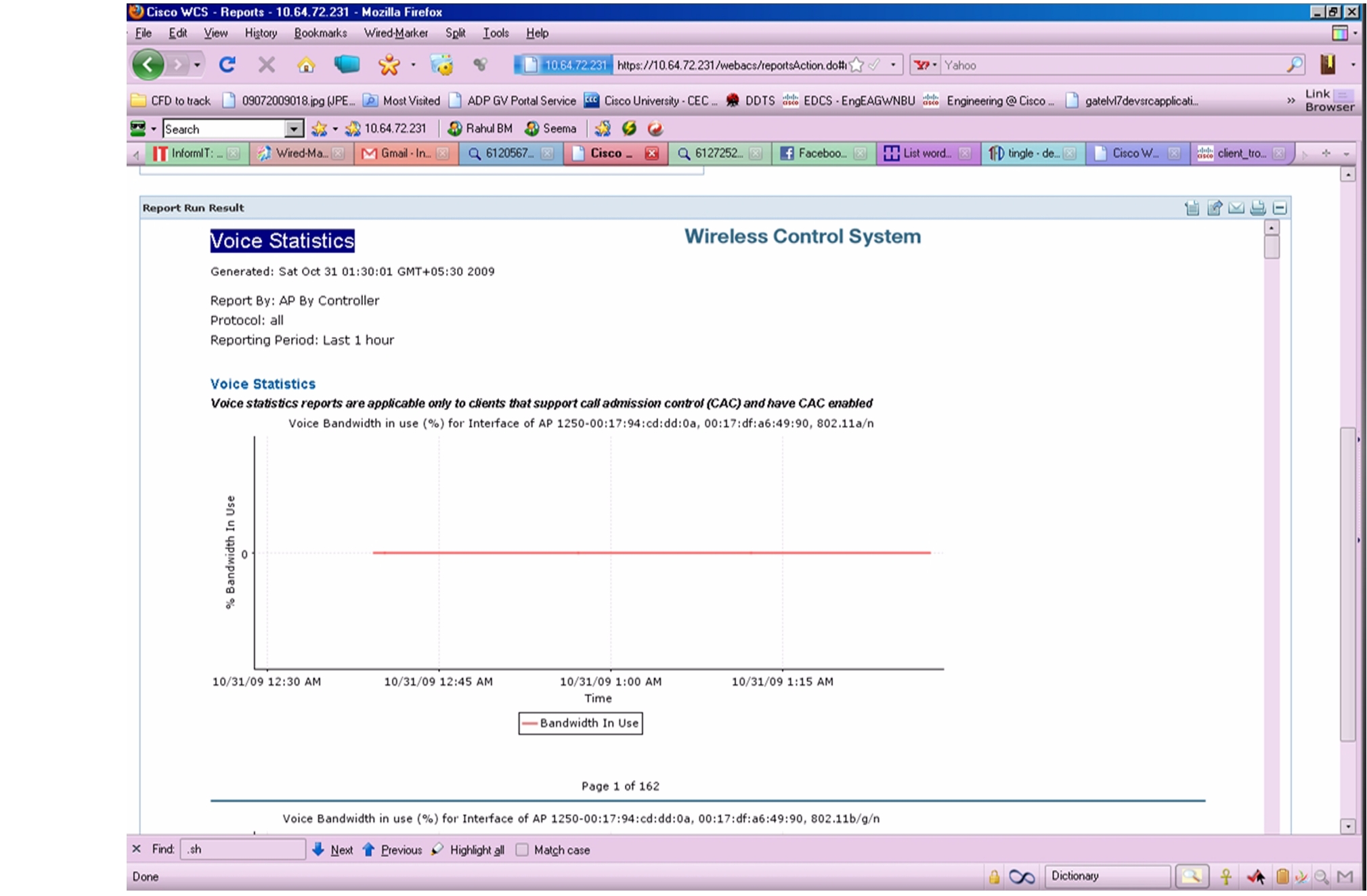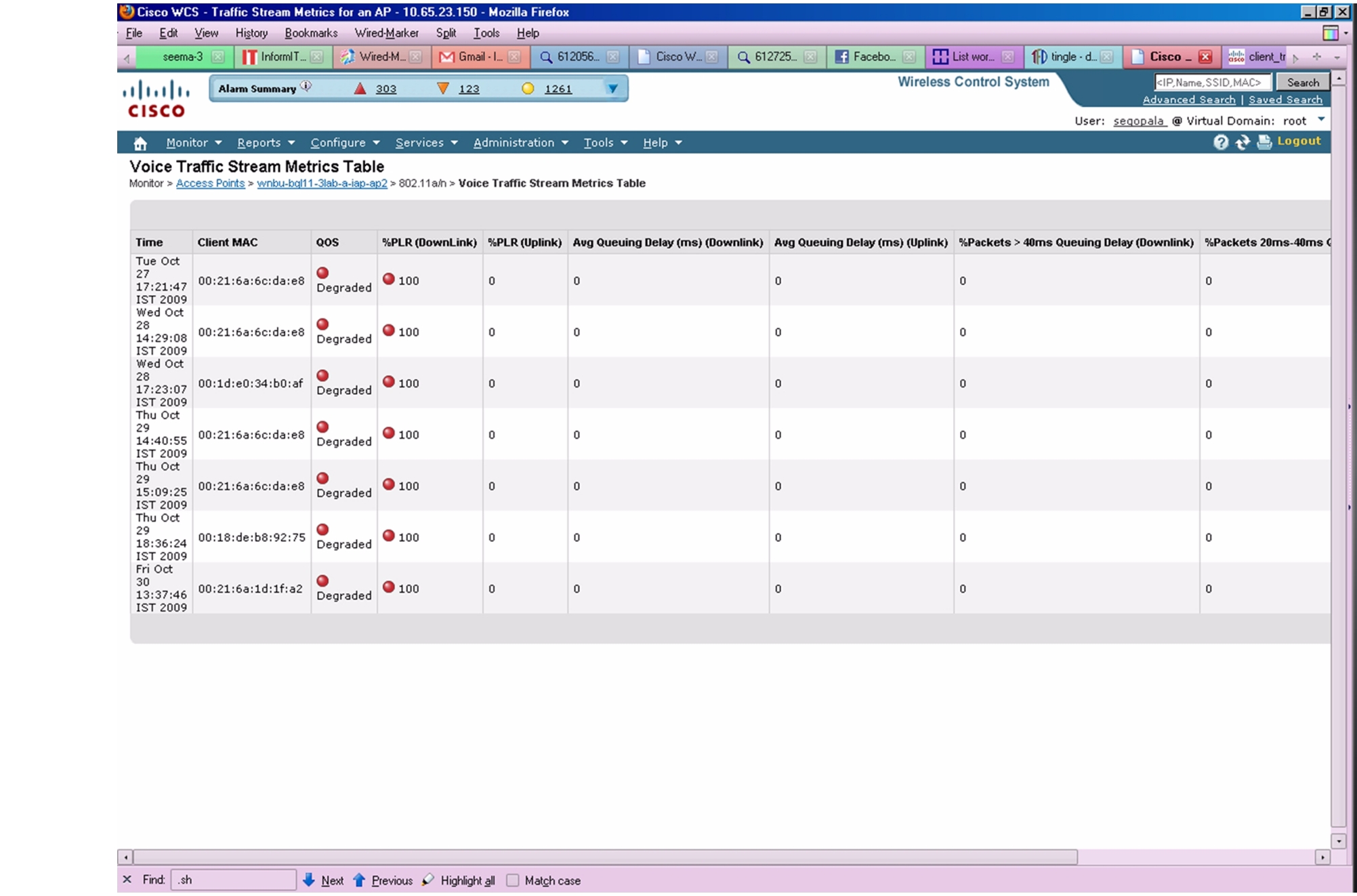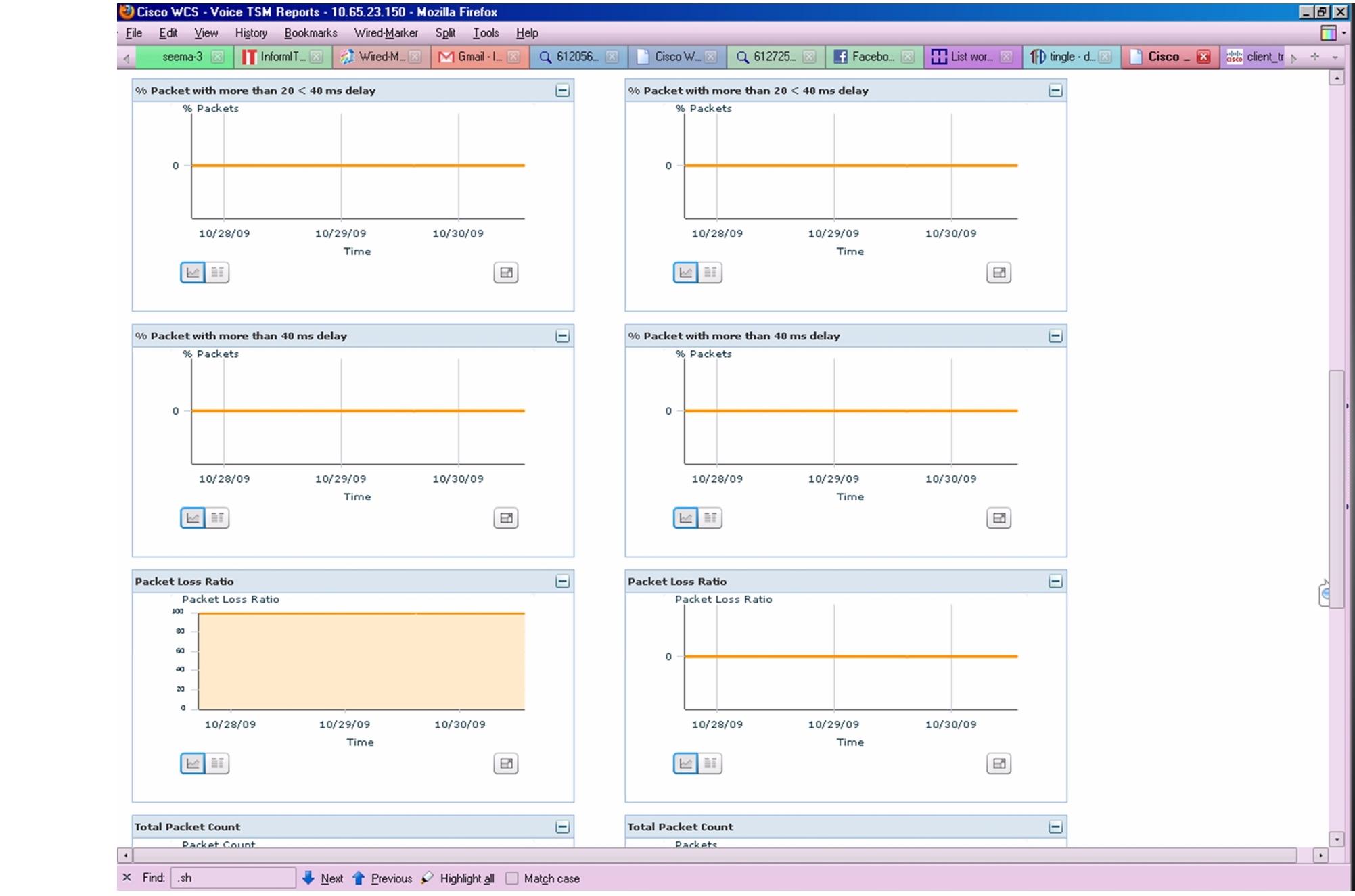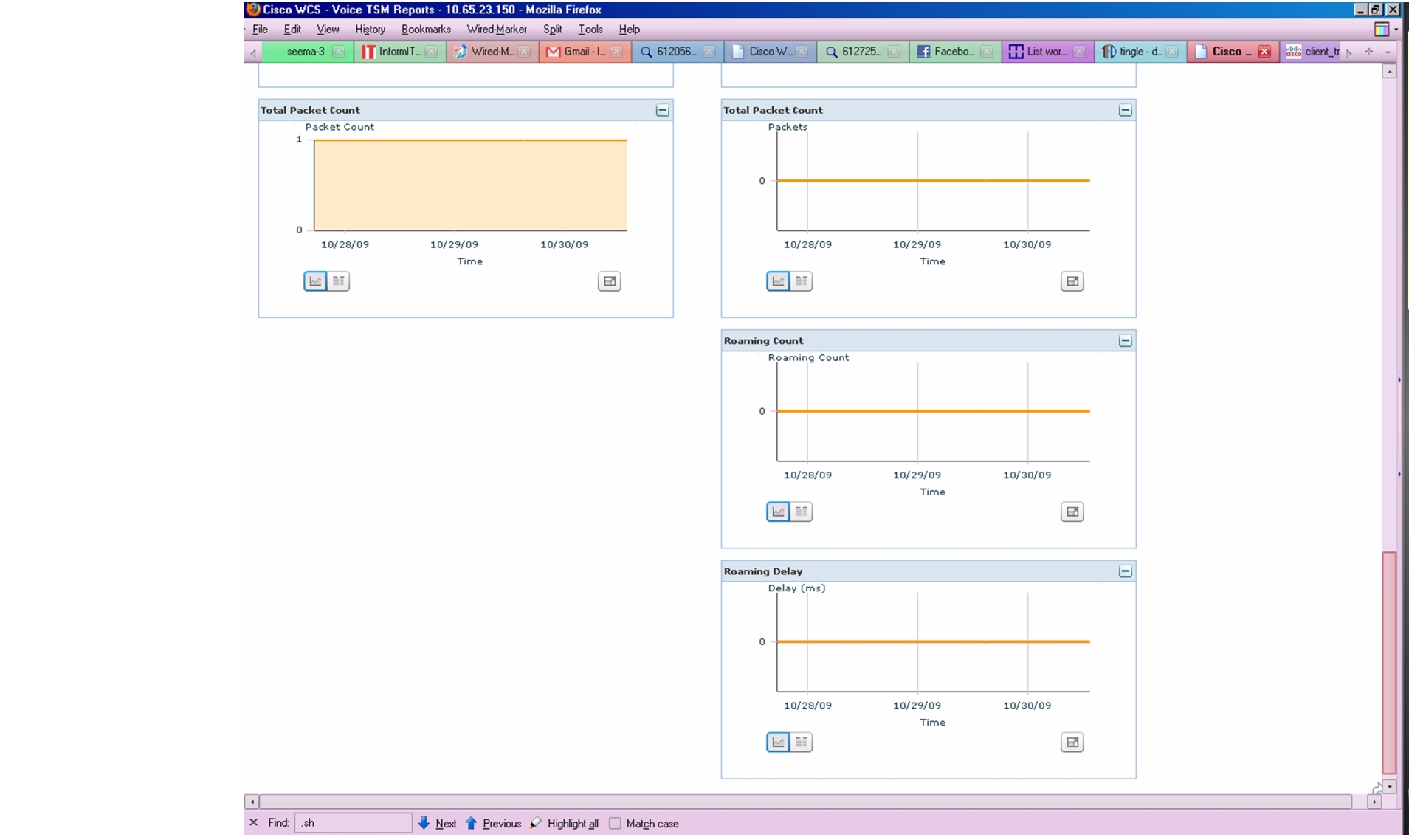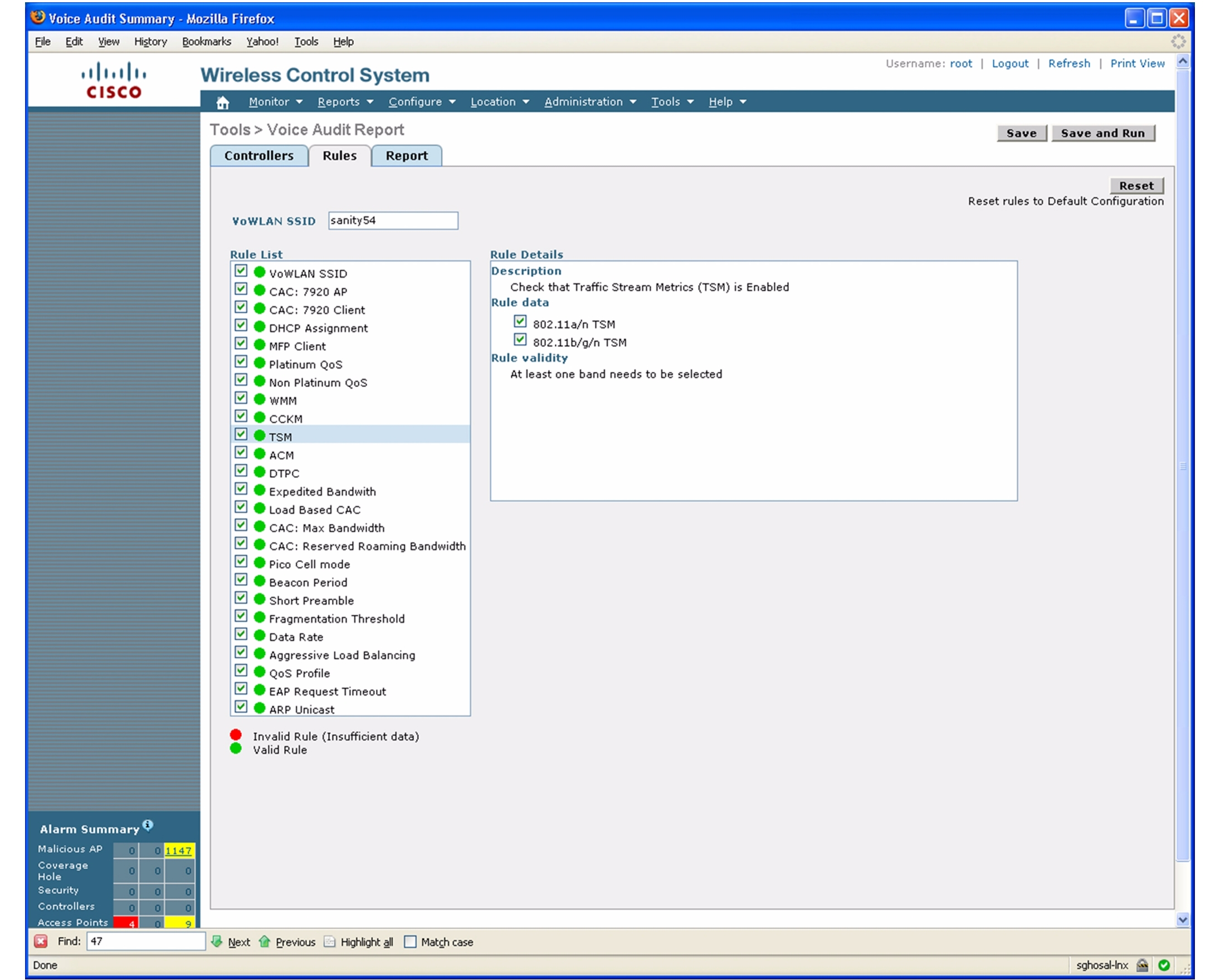

Table Of Contents
Troubleshooting Voice with WCS
Run Voice Audit and Attach Report
Check that Platinum QoS is used for VoWLAN
Check that Platinum QoS is not used for non-voice WLAN
Check that QoS policies are left at default
Check that Data rate configuration is as below
Disable aggressive load balancing
Troubleshooting Voice with WCS
Problem Definition
Users deploying VoWLAN in their network need to make their way through various issues. The top two challenges are to make sure that there is enough coverage and that the controllers are configured right.
Use Cases
The tool will be able to troubleshoot the following use cases.
•
Poor call quality
–
Red/Yellow QoS - TSM Report
–
High Channel Utilization
–
High Roaming delay - TSM Report
–
Frequent Tx power changes
–
Low AP density - VRT
–
Channel change report/RRM changes
–
Roaming history - location - integration /l2 roam history
–
RSSI report per client - distinguish
•
Call drops
–
Packet loss on TSM
–
Frequent channel changes
–
Low AP density - VRT
–
Coverage Hole Alarms/Precoverage Events
•
Not able to place a call
–
Basic 802.11 issues - Client Troubleshooting
–
Low AP density - VRT
•
One-way audio
–
High Packet loss and High latency - TSM Report
–
No TSM records indicate incorrect UP marking
•
Echo
–
High Packet Latency - TSM Report
Reference Attachment - Network-wide issue
•
Run Voice Audit and attach report
•
Voice Readiness Tool snapshot for the affected floor(s)
•
RRM Dashboard snapshot
•
Alarm/Event Counts
–
Coverage Hole Alarm
–
Precoverage Hole Event
•
Reports per Controller/Floor Map
–
Historical TSM
–
Tx Power / Channel
–
Channel Utilization
•
RF Issues
•
Customers using WLAN for data, turned on voice, AP density not sufficient
Figure 7-1 VoWLAN Readiness Tool
RRM Dashboard
Figure 7-2 Real Time - TSM Report
Figure 7-3 Client TSM Report
Figure 7-4 AP TSM Report
Figure 7-5 Tx Power / Channel Report
Figure 7-6 Channel Utilization Report
Figure 7-7 Coverage Hole Alarm / PreCoverage Event
Figure 7-8 Air Quality vs Time
Figure 7-9 VoIP Calls Graph
Figure 7-10 VoIP Calls Table
Figure 7-11 Voice Statistics
Figure 7-12 Voice Traffic Stream Metrics Table
Figure 7-13 Voice TSM Reports (1 of 3)
Figure 7-14 Voice TSM Reports (2 of 3)
Figure 7-15 Voice TSM Reports (3 of 3)
Configuration Issues
•
Customers need to spend enormous time to configure controllers as per the 792xG Series wireless IP phone deployment guide
•
Thick Deployment guide for 792xG Series wireless IP phone
•
Difficult to check which configurations are altered, over a period of time
Run Voice Audit and Attach Report
•
The WCS does Online Auditing, in which device attributes are fetched from the network with Audit is run.
•
WCS will ship with canned rules called VoWLAN Audit Rules (VRs), each of which will represent an individual configuration check. VR can be individually turned on and off by the user. Also some of the VRs may require user data as an input. Example of a VR: "Enable QBSS."
VoWLAN Audit
•
Validates the controller configuration against deployment guide recommendations or preconfigured criteria.
•
Default configuration check is based on the 792xG Deployment Guide.
•
Allows customization of the configuration validation for other client types.
•
Some configuration validations are version dependent.
•
Can be initiated on demand.
Figure 7-16 VoWLAN Audit Tool
Figure 7-17 VoWLAN Audit Reporting
VoWLAN Audit Rules (VRs)
Check VoWLAN SSID
User needs to define a set of VoWLAN SSIDs. Each controller will be checked for the existence of a subset of the user defined SSIDs.
Enable ARP Caching
This is a check box for user to enable/disable this option. This is a controller configuration.
Enable CAC
•
User needs to provide VoWLAN SSIDs.
•
CAC needs to be enabled.
•
User might provide Maximum Allowed Bandwidth and Reserve Roaming Bandwidth. The device config should have at least the user defined Bandwidth.
•
Expedited Bandwidth needs to be enabled.
•
All the above will be checked for all the user defined SSIDs.
Enable TSM metric
•
User needs to provide VoWLAN SSIDs.
•
TSM metrics need to be enabled for user defined SSIDs.
Enable DTPC
•
This is an interface-based configuration. User will be able to enable/disable per interface.
•
AP configuration might have overridden this controller configuration via custom power assignment and this will result in AP level violation.
Enable DHCP server override
User needs to provide VoWLAN SSIDs. DHCP override option will be checked for all SSIDs that matched with the user defined SSID. Note that only one violation will be raised for multiple mismatches across SSIDs.
Check that Platinum QoS is used for VoWLAN
User needs to provide the VoWLAN SSIDs. If a user-defined SSID is not present in the controller, then the rule will not be applied. The rule will be applied only when a matching SSID is found.
Check that Platinum QoS is not used for non-voice WLAN
User needs to provide VoWLAN SSIDs. For all SSIDs excluding the user-defined ones, the QoS policy should be set to non-Platinum.
Check that QoS policies are left at default
One violation will be generated even if there are multiple mismatches across different QoS Profiles.
Check RF configuration
•
Beacon period: 100
•
DTIM period: 1
•
Fragmentation threshold: 2346
•
Short preamble: Enable
•
Pico cell mode: Disable
•
Each will generate an instance of violation for each RF configuration mismatch
Check that Data rate configuration is as below
•
Disabled: 1, 2, 5.5, 6, 9, 11
•
Mandatory: 11
•
Supported: 12,18,24,36,48,54
Note
User will be able to change the values for each category. Note that only one violation will be raised for all mismatches.
Disable aggressive load balancing
The user must provide VoWLAN SSIDs. For the user-defined SSIDs, check if load balancing has been turned off.
Additional rules
•
WMM being set to "Allowed"/"Required"
•
CCKM being enabled
•
Pico Cell mode being disabled
•
EAP Request timeout being set to 20 sec
•
ACM being Enabled
VoWLAN Client Troubleshooting
Figure 7-18 Troubleshooting Client
Troubleshooting of client is divided into following categories (msgType)
•
dot11(0) - dot11-related messages.
•
dot1x(1) - dot1x, authentication-related messages.
•
pem(2) - Policy Enforcement Module - client state machine related messages.
•
dhcp(3) - DHCP-related messages.
•
aaa(4) - AAA-related messages.
•
voice(5) - Voice-related message. This is new msg type that will be added.
•
misc(6) - Miscellaneous messages, such as Roaming, etc.
TSPEC Codes

 Feedback
Feedback
